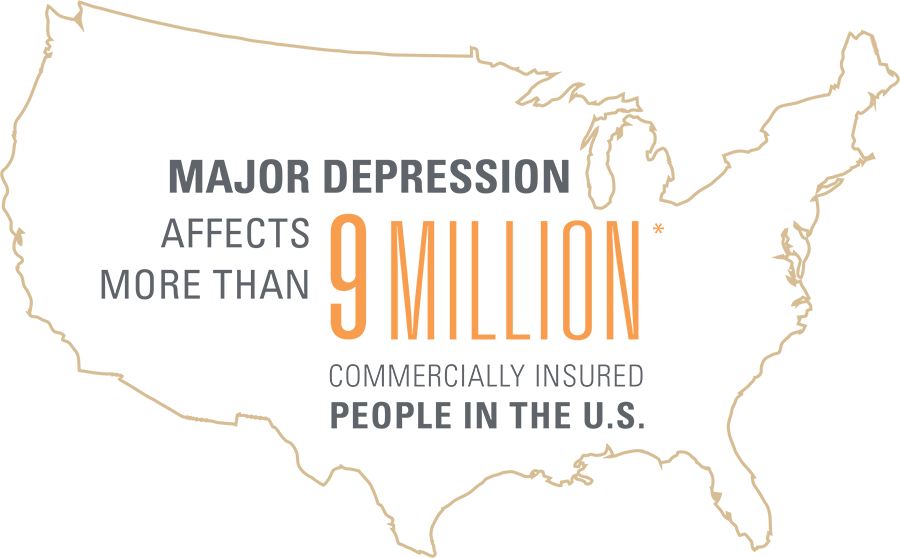
The conversation surrounding mental health has recently shined its spotlight on Minnesota. But not, unfortunately, for a good reason. Apparently, our state is quite depressed: According to a recent study conducted by BlueCross BlueShield (BCBS), Minnesota is ranked the 4th most-depressed state in the nation.
Minnesota falls just behind Utah and Maine with Rhode Island leading the nation as the state with the highest rates of depression. No surprise that Hawaii takes the spot as the least depressed state; living in paradise with warm sand and blue waters probably doesn’t hurt, and Hawaii is actually the only state with reports showing a decline in depression rates.

Depression is an incredibly complex condition that affects not only the individual, but everyone around them including family, friends, and community. The BCBS study reports that “major depression is the second most impactful condition on overall health, second to hypertension (high blood pressure).” Most diagnosed with depression are more likely to suffer from other chronic health conditions as well. The study reports that in fact, “Eighty-five percent of people who are diagnosed with major depression also have one or more additional serious chronic health conditions and nearly 30 percent have four or more other conditions.” These statistics are startling and for these individuals it “translates to a reduction in future healthy life expectancy of 9.5 years for women and 9.7 years for men.”
Mental health is fragile across the country
And depression rates in the United States are steadily climbing. Major depression affects over 9 million people in our country and since 2013 depression rates rose 33% across all genders and age groups. More distressingly, however, the study revealed concerning data showing “the most dramatic rise in major depression diagnosis is among those under 35 years of age. Between 2013 and 2016 diagnoses increased 63 percent among adolescents and 47 percent among millennials.”


With these statistics, the implications for the future of our state’s mental health, and especially for the younger generation, is blurry at best. And while the BCBS study doesn’t expand into the causes or the steps to heal depression, it certainly started a vital conversation surrounding mental health that is continuing here in Minnesota at the Science Museum of Minnesota.
The Science Museum of Minnesota debuted a new exhibit: Mental Health: Mind Matters. The exhibit runs through January 6, 2019 and provides you with a hands-on and interactive multimedia experience to learn about mental health and its impact on individuals and our society. Mental Health: Mind Matters hopes to provide a safe space to explore and discuss mental health issues removing the shame and stigma surrounding this difficult topic.
Activities in the Mental Health: Mind Matters exhibit include:
- You’ll be able to wear noise distorting headphones that mimic what a person suffering symptoms of psychosis experiences where they’re unable to filter out sounds and voices that surround them.
- Listen to audio recordings that depict what life was like for people with mental illness in different places around the world and at different points in history.
- Participate in Are You Afraid?, an immersive, full body game that helps you confront your fears.
- Let go of your worries and fears by writing them down and putting them through the Worry Shredder.
- Learn symptoms, causes, and treatments of common mental illnesses like anxiety disorders, depression, post-traumatic stress disorder, eating disorders, bipolar disorder, and more.
In a press release, Alison Rempel Brown, president and CEO of the Science Museum of Minnesota says, “Access to mental health resources is critical. At the Science Museum of Minnesota, we’re inspired by the Mental Health: Mind Matters exhibit, both because it brings awareness to the realities of mental illness and our history in treating it, and because it provides a safe, reflective place to have honest conversations about it – with our family members, our classmates, and our community.”
While perhaps we are beginning to slowly let go of the stigma and misconceptions surrounding mental illness, we still need to continue the conversation.
Especially, it would seem, here in Minnesota.
Read next: Celebrating 100 years of food, health, nutrition, education
















